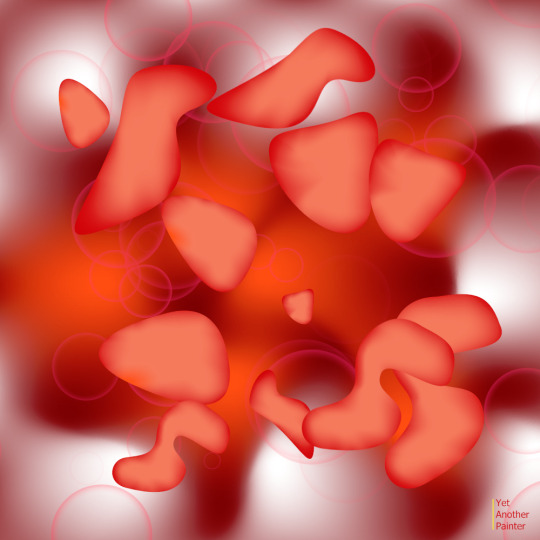#bloodcells
Text
youtube
how my bloodcells feel after beating conjunctivitis in 2 days
#funny#haha#comedy#meme#joyful cheer#joyus whimsy#conjunctivitis#pink eyes#pink eye#sick#sickness#i feel sick#illness#disease#bloodcells#immune system#immunity#micro biom#health#health and wellness#wellness#Youtube
0 notes
Video
youtube
Blood Types Explained
Blood is a remarkable fluid that sustains life by transporting essential substances, such as oxygen and nutrients, to every part of our body. While all human blood serves the same vital purpose, it is not identical. Blood types, classified by the ABO and Rh blood group systems, play a crucial role in various aspects of healthcare, from blood transfusions to pregnancy management.
The ABO Blood Group System
The ABO blood group system, discovered by Austrian immunologist Karl Landsteiner in 1900, is the most well-known and widely used classification for human blood types. It is based on the presence or absence of specific antigens on the surface of red blood cells. The four main blood types within the ABO system are A, B, AB, and O.
1. Blood Type A: Individuals with blood type A possess Antigen A on their red blood cells and B antibodies in their plasma. This means their immune system recognizes Antigen B as a foreign substance.
2. Blood Type B: People with blood type B exhibit Antigen B on their red blood cells and A antibodies in their plasma, indicating their immune system recognizes Antigen A as foreign.
3. Blood Type AB: Individuals with blood type AB have both Antigen A and Antigen B on their red blood cells, but they have no A or B antibodies in their plasma. This unique blood type is considered the universal recipient, as they can receive blood from any other blood type.
4. Blood Type O: People with blood type O do not possess Antigen A or Antigen B on their red blood cells, but they have both A and B antibodies in their plasma. This makes blood type O the universal donor, as they can donate blood to any other blood type.
The Rh Blood Group System: Rh+ and Rh-
In addition to the ABO blood group system, blood types are further classified based on the presence or absence of the Rh factor (also known as the Rh antigen). The Rh factor is another antigen that can be present on the surface of red blood cells, and it is denoted as either Rh-positive (Rh+) or Rh-negative (Rh-).
1. Rh-positive (Rh+): Individuals with Rh+ blood have the Rh factor present on their red blood cells.
2. Rh-negative (Rh-): People with Rh- blood lack the Rh factor on their red blood cells.
The combination of the ABO blood group and the Rh factor determines an individual's complete blood type. For example, someone with blood type A and Rh-positive would have the blood type A+.
Inheritance of Blood Types
Blood type inheritance is determined by genetic factors. Each person inherits one ABO gene from each parent, resulting in various possible combinations that dictate blood type:
• Blood Type A: Inherited A gene from one parent and O gene from the other (AO)
• Blood Type B: Inherited B gene from one parent and O gene from the other (BO)
• Blood Type AB: Inherited A gene from one parent and B gene from the other (AB)
• Blood Type O: Inherited O gene from both parents (OO)
Similarly, the Rh factor is inherited, with individuals having either one Rh+ gene (if they are Rh+) or two Rh- genes (if they are Rh-).
Significance in Healthcare
Understanding an individual's blood type is of paramount importance in various medical scenarios:
1. Blood Transfusions: Blood type compatibility is crucial in blood transfusions to prevent life-threatening reactions caused by blood incompatibility. Before administering a blood transfusion, medical professionals must ensure that the donor's blood type is compatible with the recipient's.
2. Organ Transplants: Blood type compatibility is a critical consideration in organ transplantation to minimize the risk of organ rejection. Matching the donor's and recipient's blood types is essential for a successful organ transplant.
3. Pregnancy and Rh Factor: During pregnancy, the Rh factor (positive or negative) of the blood type becomes crucial. Rh incompatibility between the mother and the fetus can lead to hemolytic disease of the newborn, a severe condition that can cause anemia and jaundice in the baby.
4. Emergency Medical Care: In emergency situations where a patient is experiencing significant blood loss or trauma, knowing the individual's blood type is vital for administering the right blood type during transfusions promptly.
Blood Type and Compatibility
When it comes to blood transfusions, ensuring blood type compatibility is essential. The general rule is that individuals with Rh+ blood can receive both Rh+ and Rh- blood, while those with Rh- blood should only receive Rh- blood. However, blood type compatibility extends beyond just the Rh factor. For example, individuals with blood type A can safely receive blood from type A or O donors, but not from type B or AB donors.
Blood Type and Universal Donors/Recipients
As mentioned earlier, individuals with blood type O are considered universal donors because their blood lacks A or B antigens, making it compatible with all blood types. On the other hand, individuals with blood type AB are considered universal recipients because they can receive blood from donors of any blood type, as their plasma lacks A or B antibodies.
Blood Type and Pregnancy
The Rh factor becomes especially crucial during pregnancy. If an Rh-negative mother is carrying an Rh-positive baby, there is a risk of Rh incompatibility. During pregnancy or delivery, some of the baby's blood may enter the mother's bloodstream, causing her immune system to produce antibodies against the Rh factor. In subsequent pregnancies with Rh-positive babies, these antibodies may attack the baby's red blood cells, leading to hemolytic disease of the newborn. To prevent this, Rh-negative pregnant women may receive Rh immunoglobulin (RhIg) to prevent the development of these antibodies.
Blood Type and Personality Traits: Myth or Reality?
Over the years, certain cultures, particularly in Japan and South Korea, have propagated the idea that blood types may influence an individual's personality traits. This belief, known as the "blood type personality theory," suggests that each blood type is associated with specific characteristics. For instance, individuals with blood type A are often described as organized and sensitive, while those with blood type B are seen as creative and outgoing. Blood type AB individuals are considered rational and adaptable, while those with blood type O are thought to be confident and assertive.
However, it is crucial to recognize that the blood type personality theory lacks robust scientific evidence. Personality traits are complex and influenced by a myriad of factors, including genetics, upbringing, culture, and individual experiences.
Blood Type and Disease Susceptibility
Research has also explored the potential links between blood type and disease susceptibility. Some studies have suggested that certain blood types may be associated with a higher or lower risk of developing specific medical conditions. For example, individuals with blood type A may have a slightly increased risk of developing heart disease, while those with blood type O may have a reduced risk of developing pancreatic cancer. However, these associations are often modest and do not imply a cause-and-effect relationship. More research is needed to establish concrete connections between blood types and disease susceptibility.
Conclusion
In conclusion, understanding blood types is fundamental in healthcare, with implications ranging from blood transfusions and organ transplants to pregnancy management. The ABO and Rh blood group systems classify individuals into different blood types, each with unique characteristics and compatibility considerations. Blood type compatibility is essential to ensure safe and successful medical interventions, making blood donation and blood transfusion practices critical in emergency medical care.
While the blood type personality theory is popular in some cultures, scientific evidence to support these claims is lacking. Additionally, while some studies have explored associations between blood type and disease susceptibility, the evidence remains inconclusive and requires further investigation.
The ABO and Rh blood group systems, groundbreaking discoveries by Karl Landsteiner and others, continue to play a vital role in modern medicine, saving lives and shaping medical practices worldwide. As we deepen our understanding of blood types, we gain invaluable insights into the complexity of human biology and the delicate interplay between our immune systems and medical interventions. Embracing the diversity of blood types, we celebrate the wonder of life and the collective efforts of medical professionals to ensure the best possible outcomes for patients globally.
#youtube#bloodtype#bloodtypes#abo#bloodgroup#bloodgroups#plasma#redbloodcells#bloodcells#antibodies#science#biology#bloodtest#anatomy#rhfactor#antigens
1 note
·
View note
Text
Smorgasbord Health Column 2023 – Cardiovascular and Circulatory systems and the components of Blood by Sally Cronin
Our lifeblood is an essential part of our existence and all the functions it performs minute by minute keep our bodies functioning we don’t have to press a button or scan anything it just gets on with the job of keeping our heart pumping and everything else as well…it is a small price to pay when all we have to do is ensure that we keep to a healthy diet to let our blood do its…

View On WordPress
0 notes
Text
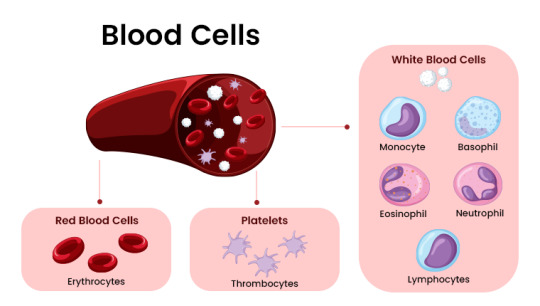
What Are Blood Cell Disorders?
A blood cell disorder is a situation in which there’s trouble with your red blood cells, white blood cells, or the tiny flowing cells called platelets, which are dangerous for clot development. All three cell types line up in the bone marrow, which is the soft tissue within your bones. Red blood cells carry air to your body’s organs and muscles. Normal White blood cells benefit your body beat infections. Platelets support your blood to lump. Blood cell disorders damage the development and performance of one or more of these kinds of blood cells.
#pharmrxpro#medication information#erectile dysfunction#painkiller#healthcare#bloodcells#bloodcelldisorder
0 notes
Text
0 notes
Text

Platelets are a part of the human body that are important for the formation of blood clots.Platelets help to defend your body from infections, keep your heart healthy,and maintain your immune system.
#platelets#blood#bloodcells#medical#medicine#science#biology#pharmacy#nutraceuticals#gencleus#pharma#ayurveda
0 notes
Text
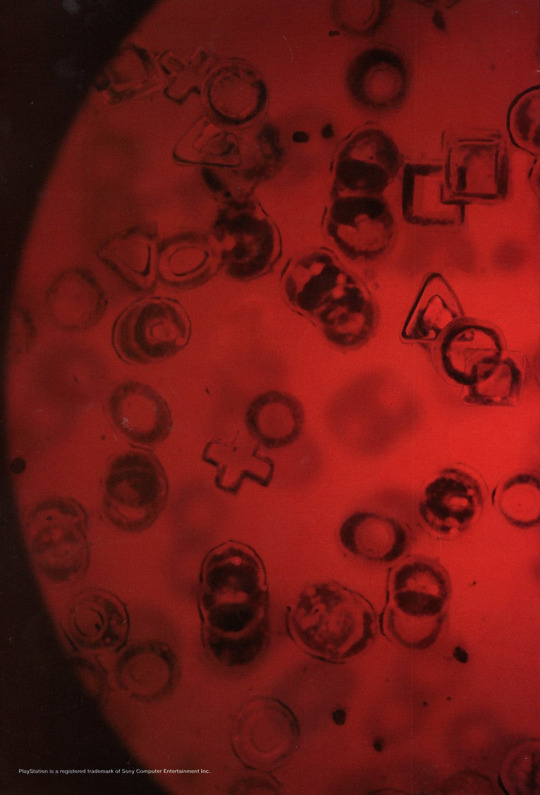
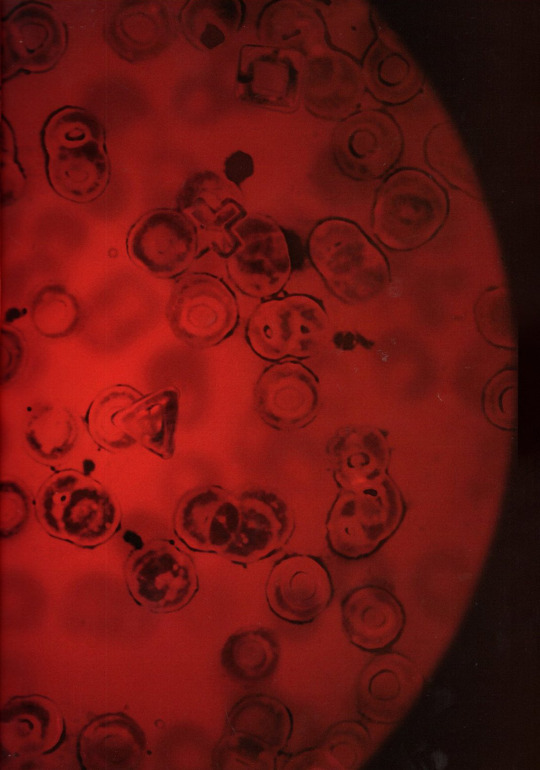
Sony: Bloodcell ad print for PS2 in P.U.R.E magazine Volume 3 Issue 1 (1999)
351 notes
·
View notes
Text
anyways people who make characters w albinism that aren’t blind are the weakest link. “oh they just need glasses” bitch.
#“yes my character has red eyes meaning that they have no pigments and are getting 0 light filtering”#“yes all they need are reading glasses ☺️” never show your face round these parts#red eyes are SEE THROUGH you are seeing BLOODCELLS#HOW THE FUCK ARE THEY NOT BLIND???
19 notes
·
View notes
Text
I burnt myself today and had a proper wound and the wound was leaking clear watery stuff and I kept wiping it away
until my friend told me that the water is actually my white bloodcells trying to help clean the cut and create a scab to heal me
and now I feel bad for my white bloodcells.
like all they're trying to do is help me and make sure my burn dosent get infected and I'm wiping them away.
After all they're doing for me I'm so mean to them
I didn't know what they were I'm sorry
(now I'm crying over CELLS)
#white bloodcells#i need to stop adding life to things that dont have feelings#cells#biology#im so sorry cells#please keep helping me im stupid and burnt myself with a glue gun#im sad now#the poor guy#health#glue gun
3 notes
·
View notes
Text
worst part abt cvtting is afterwards sitting there dabbing at ur cvts with toilet paoer for what feels like a million hours, waiting for the bleeding to stop so u can move on with ur life
#me to my bloodcells:#can u hurry i wanna go to sleep#sh tumblr#sh trigger warning#tw cvtting#cvtt1ng#sh#self h@rm#☆talks
32 notes
·
View notes
Video
youtube
Blood Types Explained
Blood types are a fundamental aspect of human biology, determined by the ABO and Rh blood group systems. The ABO system classifies blood into four main types: A, B, AB, and O. Blood type A contains A antigens on the red blood cell surface and B antibodies in the plasma. Blood type B has B antigens and A antibodies, while blood type AB possesses both A and B antigens but lacks A or B antibodies. Blood type O has no A or B antigens but contains both A and B antibodies. The Rh system, denoted as Rh+ or Rh-, depends on the presence or absence of the Rh antigen. Rh+ blood has the Rh antigen, and Rh- blood lacks it.
#youtube#shorts#short#shortvideo#bloodtype#bloodtypes#abo#bloodgroup#bloodgroups#plasma#redbloodcells#bloodcells#antibodies#science#biology#bloodtest
0 notes
Text
you're on your own kid and lehrein from aisha are like sisters to me
2 notes
·
View notes
Text
Blood Cell Disorders
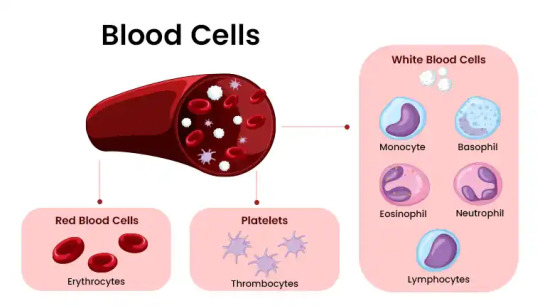
This article provides in-depth information on blood cell disorders, what is dangerous white blood cell count, symptoms, causes, and treatment, what is normal white blood cell count, and more. Let’s dive in to know more.
What Are Blood Cell Disorders?
A blood cell disorder is a situation in which there’s trouble with your red blood cells, white blood cells, or the tiny flowing cells called platelets, which are dangerous for clot development. All three cell types line up in the bone marrow, which is the soft tissue within your bones. Red blood cells carry air to your body’s organs and muscles. Normal White blood cells benefit your body beat infections. Platelets support your blood to lump. Blood cell disorders damage the development and performance of one or more of these kinds of blood cells.
What Are The Symptoms Of Blood Cell Disorders?
Symptoms will differ based on the type of blood cell disorder. general symptoms of red blood cell disorders are:
fatigue
shortening of breath
the problem in focusing on the shortage of oxygenated blood in the brain
muscle weakness
a speedy heartbeat
general symptoms of white blood cell disorders are:
chronic infections
tiredness
unexplained weight loss
malaise, or a common feeling of being ill
normal symptoms of platelet disorders are:
wounds or sores that don’t cure or are slow to cure
blood that doesn’t clot after damage or cut
skin that hurts simply
mysterious nosebleeds or bleeding from the gums
There are various types of blood cell disorders that can significantly impact your entire health.
What Is A Dangerous White Blood Cell Count?
A normal WBC count is mostly about 4,500 to 11,000/μL.
Wbc counts that are excessively high or low might be unsafe, based on the reason.
A high WBC count is called leukocytosis, which is usually detected when wbc ranks surpass 11,000/μL. This happens when the immune system is motivated by some method.
Causes of high WBC counts comprise:
Infections, such as bacterial infections
Leukemia and lymphoma, which are kinds of cancers
Trauma
Extensive wounds or injuries
Acute or chronic irritation such as from autoimmune disease, allergies, and other inflammatory difficulties
Cigarette smoking consumption of certain medicines, comprising corticosteroids heparin, lithium, albuterol, and related medicine
if there is a low wbc count it is named as leucopenia, which is usually detected when wbc levels are under 4,500/μL.
Reasons for low white blood cell counts comprise:
Tumors or syndrome in the bone marrow
A few medications, for example, chemotherapy for malignant growth, a few antimicrobials and diuretics, hostile to thyroid chemical pills, captopril, seizure prescriptions, and others
Liver and spleen difficulties
Radiation therapy to cure cancer
Leukemia and other cancers
Physical or emotional tension
How Are Blood Cell Disorders Spotted?
Your doctor might advise you for various tests, comprising a complete blood count (CBC) to check how many of each kind of bc you have. Your doctor might also ask you for a bone marrow biopsy to check if there are any abnormal cells rising in your marrow. This will include eliminating a tiny amount of bone marrow for examination.
What Are The Treatment Choices For Blood Cell Disorders?
Your treatment plan is based on the reason for your disease, your age, and your general health status. Your doctor might utilize a combination of treatments to benefit precisely your bc disorder.
Medication
Some pharmacotherapy choices comprise medicines such as Nplate (romiplostim) to encourage the bone marrow to create more platelets in a platelet condition. For wbc disorders, antibiotics can benefit in battling infections. Dietary medicines such as iron and vitamin B-9 or B-12 may cure anemia due to shortages. Vitamin B-9 is also named folate, and vitamin B-12 is also popular as cobalamin.
Surgery
Bone marrow transplants might heal or replace injured marrow. These include transferring stem cells, generally from a donor to your body to benefit your bone marrow and initiate creating normal b c. A blood transfusion is another choice to benefit you restore lost or injured bc. Throughout a blood transfusion, you receive a mixture of healthy blood from a donor.
Both techniques need particular standards to flourish. Bone marrow donors need competition or be as near as possible to your hereditary profile. Blood transfusions need a donor with a well-matched blood type.
A normal WBC count
A normal WBC count can show that your immune system is running regularly. The typical reach for a white platelet count is normally somewhere in the range of 4,000 and 11,000/microliters.
Issues like age and sex might determine what a normal range appears like.
According to the Leukemia and Lymphoma Society (LLS), these are the normal wbc count ranges for people in the mentioned sets:
Age range and WBC per liter of blood
Adult men 5,000 to 10,000
Adult women 4,500 to 11,000
Children 5,000 to 10,000
#pharmrxpro#erectile dysfunction#medication information#painkiller#healthcare#healthylifestyle#bloodcells#whitebloodcells#CellDisorders
0 notes
Text
0 notes
